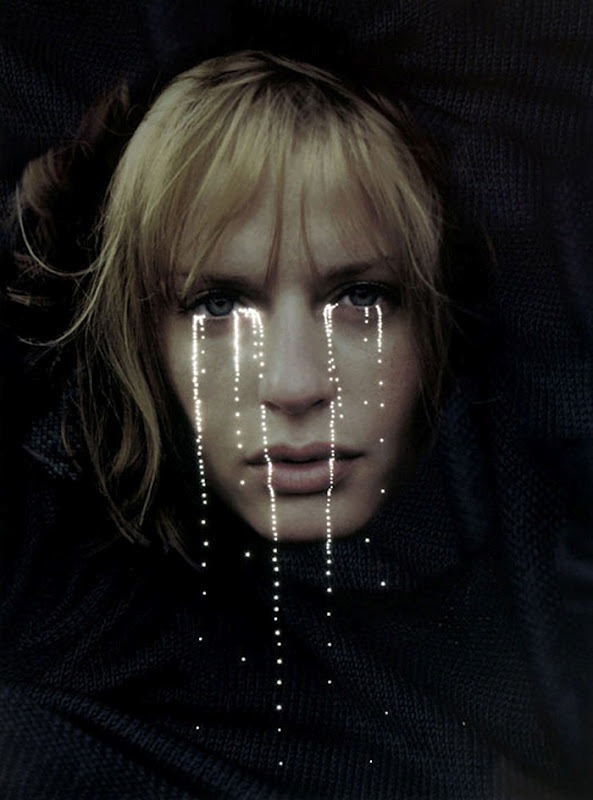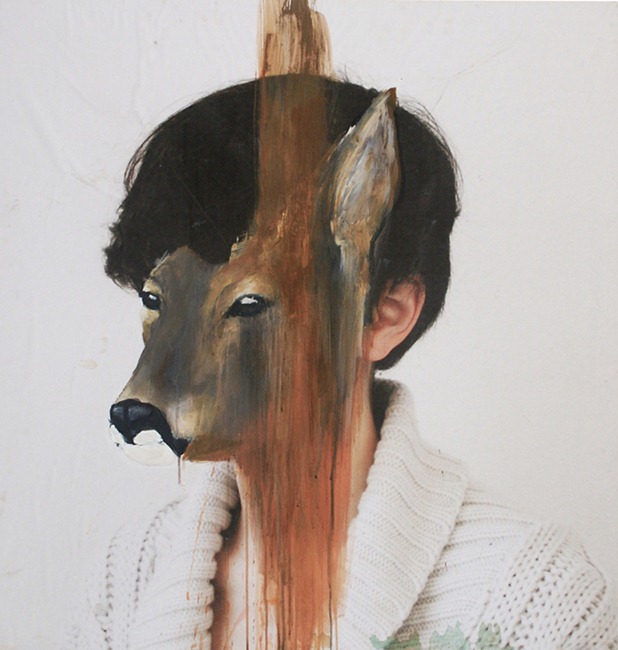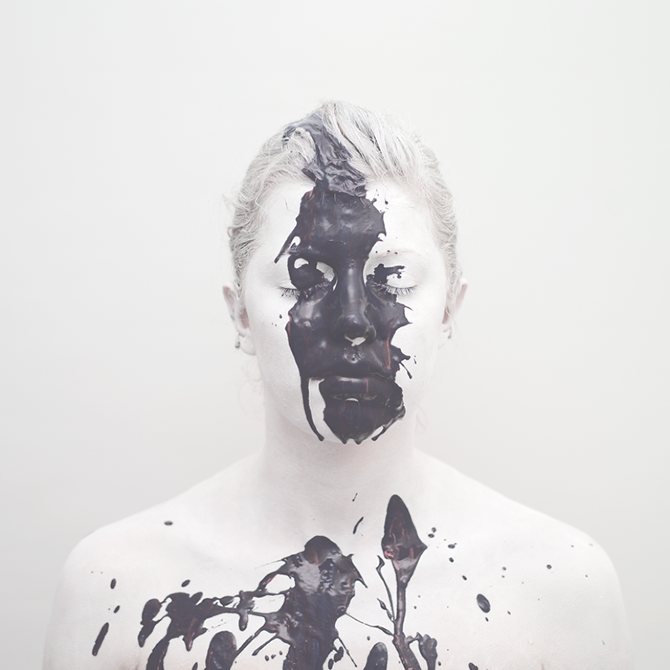Artist A Day is a great resource for finding new artists and seeing what these amazing people are creating worldwide. Anyone can apply to be featured!
Tag Archives: Crista Dougherty
Smith and Vallee Printmaking Show
If you liked solar plates and want to see some other kinds of printmaking, check out the current show at Smith and Vallee in Bow-Edison! Many artists from Western have work up and the reception is June 2.
http://www.smithandvallee.com/gallery/exhibitions/nw-printmakers-open-call
Daniele Buetti
Daniele Buetti is a Swiss artist, currently teaching in Germany, who uses light boxes with perforated prints as well s light installation. Some of the work is definitely more appealing to me than others, but these light boxes are wonderful. Check it out Laurel Kam!
Charlotte Caron
Charlotte Caron’s work is relevant to the discussions we often have about painting and photography. Interesting idea.
Inkject Transfer on Fabric
While the project itself is a bit cheesy, here is a blog post about doing an inkjet transfer onto fabric. There seems to be lots of possibilities for this technique!
http://melangeonetsy.blogspot.com/2009/08/tips-on-image-transfers-with-inkjet.html
Liu Bolin, The Invisible Man
Liu Bolin makes amazing performative photographs were he paints his body to blend into his environment. I’ve seen other work like this, but some of his images are just incredible.
Jim Cowan
Image
Mike Ware Discusses Relationship between Art and Science
A Bridge for Two Cultures
“Photography is a Bastard left by Science on the Doorstep of Art”; thus Peter Galassi epitomises our adopted medium, prior to making a case for its legitimization. This racy definition highlights the characteristic that attracts me to photography. ‘Bastard’ in German is less pejorative than in English – it simply means ‘hybrid’; and photography is indeed a hybrid product of ‘two cultures’ in which science and art can be united. When practising photography we may find ourselves adopting both scientific and artistic ways of thinking – though rarely simultaneously – the one often characterised as ‘convergent, analytic and reductionist’ and the other as ‘divergent, holistic and metaphorical’. I am speaking, of course, about the relatively humble levels of scientific and artistic thought, with which most of us engage in varying degrees. Who knows what goes on at the highest levels of scientific and artistic creativity? These states of mind may well be indistinguishable, and we can only inadequately describe them as manifestations of ‘genius’. At the everyday level it is important to make the appropriate response to circumstances. As Denis Donoghue said: “A problem is something to be solved, a mystery is something to be witnessed and attested.” If we are standing before a magnificent sunset, do we treat it as a problem, responding with: “The colours you see are due to the dependence of the intensity of the Rayleigh-scattered light on the inverse fourth power of the wavelength.” ? No. Well, not unless someone asks. What we say -if anything- is “Ooo-er!” attesting the mystery, not explicating the problem.
It’s usually true that the ‘two cultures’ demand different mental attitudes and disciplines. The best definition of ‘Science’ that I ever heard was provided by the Slade Professor of Fine Art at Oxford, “Science is a way of looking at the world from the point of view of nobody”. In other words, it’s an essential condition that one scientific observer be replaceable by any other: there’s no room for personality in the observation. Personalities do obtrude into the business of science, though: I have a cynical theory that this is the reason why scientists tend to have such monstrous, suppressed egos – because they are thwarted from expressing themselves directly through their work in the way that is natural to the artist. In Professor Windt’s definition, the antithesis with Art is unspoken but implied:- Art is always a way of looking at the world from the point of view of a unique somebody, and we all know that this is true even of the seemingly ‘objective’ medium of photography.
I would like to outline here a personal experience of the interplay between art and science through the medium of photography. About fifteen years ago, in search of an expressive outlet to counterbalance a life otherwise over-weighted by depersonalised science, I took up photography. It provided much excitement, fulfillment and joy through the image-making, although the technical aspects offered little fresh interest because they too much resembled a busman’s holiday. I was content then to accept the photographic materials that had evolved to satisfy the ‘market forces’ which are said to determine what is commercially viable. As another consumer of the silver-gelatin monoculture, I appreciated the excellence of modern emulsion technology, but was not aware that there could be any alternative.
Then, around 1981, I discovered in chance reading that there were other ways to print a negative. At first, it was sheer curiosity that prompted me to make a platinum print, but as I looked long and hard at the products of those early experiments, the conviction grew that these ‘lost options’ could enhance the expressive capability of the medium. It was like hearing the Goldberg Variations played for the first time on a harpsichord rather than a pianoforte. So the chemical monster raised its ugly head again, even within the artistic refuge that I had created for myself. It seemed that there was scope here for making a technical contribution, because the 20th century re-discoverers of these 19th century alternative processes were still using the original recipes, sometimes with evident difficulty. Perhaps modern chemistry could offer a ‘technical fix’ ? Two preoccupations began to gather momentum in my personal work, running along converging tracks: on the one there were the attempts at expressive picture-making, stimulated by contact with Ray Moore, Paul Hill, John Blakemore and Pradip Malde; on the other, the investigation and updating of alternative processes for photographic printing: palladiotype and platinotype, chrysotype, kallitype, argentotype, argyrotype and cyanotype. When the chemical research on a process seemed complete, the tracks converged and I thought that with the technology in place and finalised, I would be free to get on with using it for picture-making. Life is never so simple! The journey to ‘re-invent the wheel’ in the shape of 19th century processes seems endless, like the wheel itself. It has led me off on some interesting branch lines, especially into the history of photography, where the interplay between technology and art, between science and aesthetics, between personality and politics has provided some fascinating insights, and made some compensation for my neglected education in the humanities. Viewing the history of photography from the perspective of a scientist has also led me recently into researching some aspects of photograph conservation – but that’s another story.
So far, in this account of photography as a personal meeting ground for science and art, the science has only featured in its humblest role: namely, a provider of ‘ennabling technology’, as we say in the trade. Now it is a widespread misconception that this is the only function served by science. Popular journalism fosters the notion that science offers nothing more than a series of ‘technical fixes’ some of which, moreover, backfire horribly – the hackneyed paradigm of Frankenstein’s monster. Entities like “chlorinated fluorocarbons”, “lead tetraethyl”, “methyl isocyanate”, or “cadmium”, are made to assume the guise of evil spirits. Yet most of us have, at one time or another, used a fridge, travelled by car, packed in polyurethane, or even printed on a certain fibre-based paper! The evil lies not in the science or the substance, but in a lack of proper care and concern for the way it is used. When disasters do occur, “science” usually gets the bad press, blamed for misfortunes that are actually inflicted on society by over-greedy manifestations of the profit motive. This unedifying debate is best left to the politicians and the experts in environmental health.
Science has a much deeper function than all this: it provides us with an understanding of the physical world in which we live. I also suggest that, as an integral part of our contemporary culture, science can have a significant role in shaping the perceptions of the ‘poetic’ or ‘spiritual’ world of an artist. Regrettably, the depth and specialization of contemporary science confronts the majority of us with a seemingly impenetrable barrier of jargon. In consequence, it may not be widely appreciated that the physical scientist’s world-view contains a vividly imaginative visual component. In the past, an awareness of this kind was a natural part of cultural understanding – much more so than it is today – because ‘Natural Philosophy’, as it then was, concerned itself mostly with Botany, Biology, Zoology and the like, which were sciences where structure, form and function played a central and reasonably obvious descriptive role without the need for difficult mathematics or esoteric concepts. The historical origins of scientific observation are beautifully illustrated in Jane Routh’s recent photographic work, shown in this issue; her exquisitely constructed pictures make links between the fineness of observation and the poetic and subjective response of a person with a passionate concern for living, growing things.
An art critic like Ruskin could also interest himself in crystallography or plant taxonomy. The photographer Frederic Evans was strongly influenced by Theodore Cooke’s monographs on mathematical forms in nature as Anne Hammond has illustrated in her essay. It may be that we are now seeing a re-awakening of this interaction between art and science thanks to the effective popularization of some recent spectacular advances in mathematics -dealing with chaos, fractals and catastrophe theory – which bear on form in the natural world. For instance, readers of Inscape Number 2 will be aware of the success of Bill Hirst’s Fractal Landscapes, and will also know that he is a physicist; readers of the Photographic Journal have recently been treated to an article on the Mandelbrodt set.
The principles of modern physical science are not self-evident to the unaided senses as were those of much early Natural Philosophy. I write mainly of chemistry, because that is closest to my experience, but I hope that much is applicable equally to the other physical and biological sciences. The chemist of today is not, as so often popularly portrayed, just a synthesiser of (often noxious) substances; s/he is also a contemplative and a visionary, with a highly developed sense of structural relationships in three dimensions, involving the filling of space with shape; and the form, geometry, symmetry and topology of objects. These skills in visual sensibility are more usually associated with the artist, architect and designer. The difference is that chemists use structural concepts in seeking to explain the properties of matter in terms of its molecular composition. As a commonplace example take the sheet of paper on which these words are printed: most of its very convenient properties -its whiteness, lightness, strength, absorption of ink, ease of manufacture, and the fact that you can use it to light the fire- are explicable in terms of the geometrical way the atoms of carbon, hydrogen and oxygen bond together, arranging themselves in a regularly repeating pattern in space to form the ribbon-like molecule called cellulose, the commonest organic molecule in the world. The way in which these molecules can pack together accounts for many of the properties of your piece of paper. Should you wish me to eat my words, I could even explain why I would not be able to digest them, although I have no such difficulty, unfortunately, with a plate of chips: starch has the same composition as cellulose but there is a subtle difference in their molecular structures. I calculate that this exemplary sheet of paper that you hold is made up of about a million million million molecules of cellulose, which establishes the point that the chemist’s conceptual world is distinctly sub-microscopic. Nonetheless, many of the geometrical and structural concepts are no different from those of the architect, engineer or artist: an education in chemistry can, therefore, equip one with some of the visual sensibility to appreciate shape, symmetry and form in the visible world of nature and art. It is no accident that the chemist may use the sculptor’s language when speaking of “making models” of reality.
The approach to photography which is informed by an appreciation of structure in nature and stimulated by a sense of awe and delight in meditating on it, is one facet of that broad area which might be described as “contemplative photography”. Such practice stands in sharp contrast to that of the socially-committed photographer working at the cutting edge of socio-political comment, where, to use the jargon, “issues” are “addressed”. The practice of “contemplative photography” seems to call for a defence against the accusation that it is unfeeling and even callous simply to observe the exterior world and allow it to filter through ones consciousness and experience, without seeking to improve or change it. Our world, in its human social aspects, all too often displays a face that is irrational, cruel, greedy, wasteful and unjust; I applaud and support those who seek through photography (and every other means) to change it for the better, but I reserve the right to use my photography to celebrate human values in a different way because I believe that ‘simply observing’ is one of the most important things that we can do. How can I justify that?
It is my belief (in the absence of any other) that our observation of the world is the only intelligible purpose that we can project upon it. Putting this in personal terms: a chemist like me is really nothing more than a molecule’s way of getting round to thinking about itself. The fact that it has taken four billion years to do so, adds some significance to the endeavour, whether or not it may seem worthwhile! (By the way, any photographer who doubts the essential truth of Darwinism should read Dawkins account of the evolution of the eye.) In the fullfillment of the blind struggle of evolution, our role as intelligent observers is uniquely important -at least until we find out, for sure, if there are any other intelligent observers elsewhere. Photography provides a valuable means of preserving those observations that hold significance for us. And I do not refer only to the ‘heavily meaningful’ kind of significance: the human condition also embraces significant humour, triviality and fun as well as the whole gamut of resonances springing from the simile, metaphor and allegory of our poetical endowment, which science cannot admit. Photography enhances our ability to see and induces us to make observations that might otherwise prove elusive. Paul Nash put this very clearly in 1932 when he wrote of “…the peculiar power of the camera to discover formal beauty which ordinarily is hidden from the human eye.”
It is the delight in this act of disclosure that I feel unites me with my fellow photographic observers of so many different backgrounds, tastes, beliefs and personalities. In conclusion, I return full circle to my subject with the words of the first photographer:
“All this falls within the artist’s province to combine and to regulate: and if, in the course of these manipulations, he, nolens volens, becomes a chemist and an optician, I feel confident that such an alliance of science and art will prove conducive to the improvement of both.” (William Henry Fox Talbot, 5th February 1841)
http://www.mikeware.co.uk/mikeware/main.html
Mike Ware
Here’s the video on Platinum printing we showed in class.







